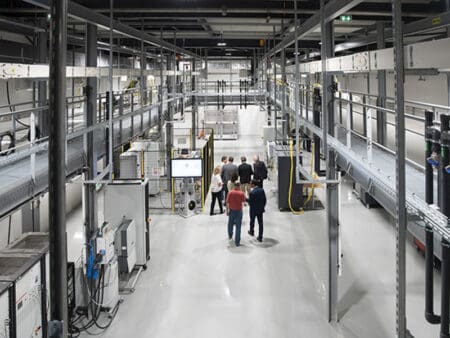
The PUMA1 lab at the National Institute of Solar Energy (INES) in southeastern France has been restructured as a smart grid research facility.
The ‘Grid Control Lab’ as it has been named, which is located at INES at Le Bourget-du-Lac close to Grenoble, is designed for research on the management of grids in the context of large scale integration of renewable energies, batteries and hydrogen storage and e-mobility.
The new lab is aimed to enable the testing of new concepts, such as DC and medium voltage distribution networks, to be tested in a controlled environment before deployment in the real world.
A key focus is intended on converters, which are becoming increasingly important for routing and flow control in grids with decentralised production and storage.
Have you read?
Study to optimise transmission capacity with power line data
Spotlight on France: Renewable energies and the challenge of grid integration
This new platform enables the design, development and testing of converters for megawatt power with a connection to the 20kV grid and can work up to 3kV in DC.
Real-time piloted simulation systems combined with high-frequency monitoring then allow the creation of models of smart microgrids integrating these converters.
The whole is connected with the classic elements of networks, i.e. generators and PV and storage systems, on a scale representative of that to be faced in the years to come.
“The mastery of converters in a smart electrical network is as critical as the control of valves for a hydraulic network,” states the opening announcement of the lab, which is now a facility of the French research organisation CEA.
ESTP smart grid test bench
The Grid Control Lab is the second new test facility to have opened in France in recent months.
In September 2022, the School of Large Projects (ESTP) opened a smart grid test bench in its electricity laboratory at its Cachan campus.
The facility, which was designed in collaboration with the engineering company VINCI Energies, is on the scale of a block or district and is aimed primarily for training and raising awareness among tomorrow’s engineers.
Other intents are to support other laboratories and research centres and to provide a tool for manufacturers to select infrastructures and equipment that will promote the energy transition.








